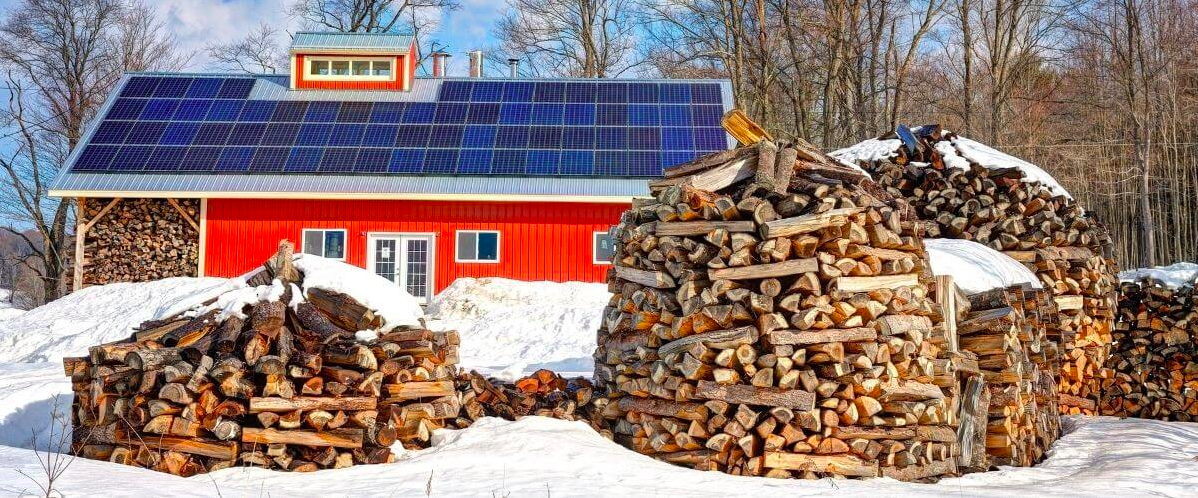Silloway Maple taps into its 80-year-old tradition
By Nina Livingstone
Following my father into Vermont’s mountains was an adventure that my family and I relished each fall. An experienced hiker with a love of nature, he guided us off the well-worn paths, letting his compass navigate the way. My father pointed out maple trees and explained the process that turned its sap into the syrup that sat bottled upon our breakfast table.
On one occasion, as we walked deep into the forest, my father marked our trail with stories as I poked marshmallows on the end of tree branches to mark our path. Glancing back at me, my father set aside his maple tapping tale long enough to warn me that animals would eat my marshmallow guides and perhaps even join us for our walk. My ingenuity had been wasted, but the maple syrup stories I remembered.

Photo credit: Silloway Maple

Photo credit: Silloway Maple

Bette Lambert of Silloway Maple
NINA: Your parents started Silloway Maple in 1940. Can you describe how trees were tapped and the sap processed in the early years—before the tube was installed in the 1970s?
BETTE: In the early years, the woods’ roads were broken out early in the spring with Dad’s team of workhorses. The trees were usually tapped during February school vacation, so the family could help. In the ’50s the bulldozer was used in place of the horses. Each tree was tapped, progressing from a hand bit and brace, to a gas-powered tapper, to today’s battery powered drill. Dad drilled the holes, a precise job requiring a steady hand. The next person tapped in a metal spout, the next hung a bucket from the long, heavy roll of buckets carried, and finally, the last person slid on a cover to keep out the rain and snow. When the sap ran, back through the woods we went again, pouring the sap in our gathering pails to lug to the tank on the sled. It was a great time. Back to the sugarhouse, where the sap flowed by gravity into a big storage tank, then into the wood fired evaporator to be boiled after milking was done.
NINA: What was your dad like outside of the sugarhouse?
BETTE: He had good humor, a great work ethos, and inventiveness. He lived through the Depression and never wasted anything or went into debt. He made excellent quality maple syrup, and I think we all follow his footsteps.
NINA: Do you miss the old days of pail and tractor or was that before your time?
BETTE: Oh, I do! There was a great camaraderie that I miss today. The young men go off to the woods now with that same great time together, facing all kinds of weather and challenges, but I work in the sugarhouse, giving tours, making candy and so on.

Photo credit: Silloway Maple
NINA: Is the making of maple syrup still a family affair? Can you describe it?
BETTE: Yes, it is! Paul manages the woods, 22,000 taps, a full-time job during sugaring to keep the sap lines in good repair and see that the tanks are clean, the sap hauled to the sugarhouse, and run through the reverse osmosis machine, which removes part of the water before we boil. Marilyn does about half of the boiling, along with managing our maple creamee business and many other jobs. My older brother, David, still works on the wood supply and helps can the syrup. My son, David, helps when his job allows. It is my full-time, year-round job to manage the sales and candy making.
NINA: What is the most labor-intensive step in the process?
BETTE: The maintenance of the sap lines during sugaring. There’s lots of damage to the tubing from squirrels, porcupines, bears—and limbs falling during storms. The woods are steep, the snow is deep, and there are miles of line to check.
NINA: Can you describe the other sweet treats available from Silloway Maple? What’s the most popular?
BETTE: Maple Creamees are famous right now, with people driving to taste, and enjoy our beautiful scenery. Then there is our pure maple candy, maple cream, maple sugar, maple covered almonds, infused syrups, and even a maple sugar rub.

Photo credit: Silloway Maple
NINA: What is the favorite maple syrup flavor among customers?
BETTE: Amber Rich! But all the grades are favorites with some. Interestingly, we always produce some of each grade.
NINA: What has been the most rewarding experience in the ongoing success with Silloway Maple? What’s the highlight?
BETTE: Well, today it would be the big ribbon won for Best of Show in the Maple department at the Tunbridge Fair! We take great pride in the high quality of our wood-fired maple syrup. Also, maintaining the historical flavor of our business, with wood fire, and welcoming visitors to see the everyday working of our business, whether it is actually boiling, candy making, or canning syrup. We are not a typical tourist stop/gift shop, we are a working farm.
NINA: What has been the biggest challenge since Silloway Maple was founded?
BETTE: Keeping it a family friendly place to be, with the increasing technology. The sugarhouse has a different look and feel from the old sugarhouse, where there was much lower production, and more family spending time just watching the boiling and eating suppers.

Photo credit: Silloway Maple
NINA: What’s the most accomplished development thus far in the business?
BETTE: That’s a hard question! The reverse osmosis machine made a tremendous change in firewood and boiling time, the internet has made marketing and our ability to reach the entire country possible.
NINA: How many gallons of sap and how many hours of boiling does it take to make a gallon of maple syrup?
BETTE: An average of sixty gallons, though it varies, and we draw off about fifty gallons an hour.
NINA: How does your family enjoy maple syrup? What dishes might you include maple syrup with?
BETTE: It seems like we make and serve everything with maple syrup. Of course, the traditional pancakes and French toast, but also barbecue sauce, salad dressing, granola, all baked items….

Photo credit: Silloway Maple
NINA: Do you have a favorite family story to share?
BETTE: Well, a favorite saying of my dad’s was that, “Boiling is hours of boredom with moments of sheer panic!” It’s true, there are so many hours of boiling, routine boiling, and then suddenly there’ll be a malfunction in a valve, or other problem, and the pan is in danger of burning on. I’ve seen my dad carry out the fire from the arch with a scoop shovel and throw it into the snowbank. I’ve more recently watched my daughter grab the hose and douse the front pan with water to save it from burning on. “Not a job for a nervous man,” my dad always said.
NINA: In 2014 you built a new sugarhouse and installed solar panels. What role does solar energy play in the process of making maple syrup and what is its biggest advantage?
BETTE: Our solar array produces the energy for the sugarhouse, the reverse osmosis uses a lot. It’s a great financial help, and also adds to our “story,” all renewable resources.
NINA: Can you explain how reverse osmosis works?
BETTE: The raw sap is pumped through a semi-permeable membrane, which removes part of the water. Sap has an average sugar content of 1.5%, and the RO concentrates it to about 15% sweet before boiling.
NINA: Do you wear special clothes when working with maple syrup?
BETTE: My father was always careful to change out of his barn clothes (we’ve always had dairy cows as well), to be clean around the sugarhouse. The guys wear good winter boots, waterproof pants and sometimes gaiters in the woods, often have a headlamp on day or night, and snowshoes are always handy. Double pants are great for firing the arch, also long, heavy gloves.

Photo credit: Silloway Maple

Photo credit: Silloway Maple
NINA: What do you envision for Silloway Maple in the next decade?
BETTE: Expansion, more value-added products, different grandchildren growing into the business.
NINA: Is there something we should know about Silloway Maple before visiting the store?
BETTE: Expect a working farm. There may be hoses pumping hot syrup, candy boiling, and a few grandchildren riding tricycles about. We may be stirring maple cream or be in the middle of a tour. You can walk to the sugarwoods to see the sap lines.
This story was originally published on New England Doorstep Market on October 21st, 2021.








